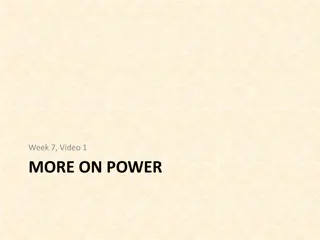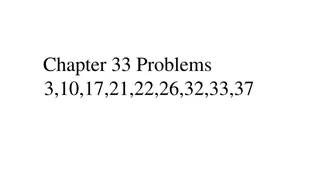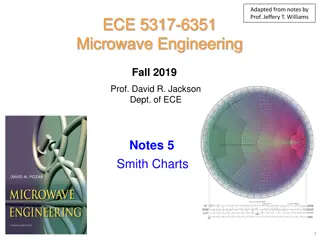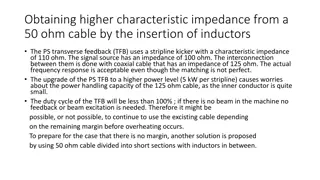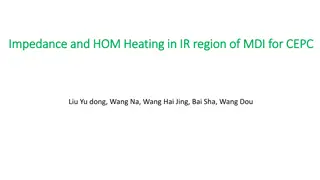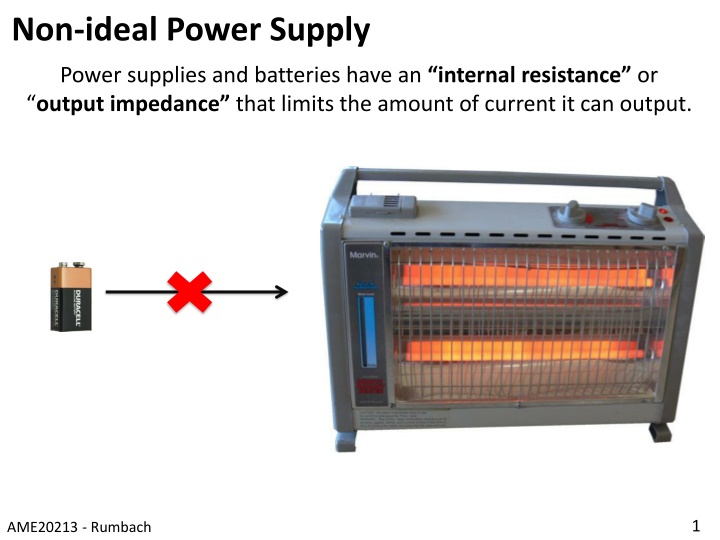
Non-Ideal Power Supplies: Internal Resistance and Impedance
Explore the concept of non-ideal power supplies and batteries, their internal resistance, and output impedance that determine the maximum current output. Learn about voltage droop, the relationship between power output and load resistance, and the significance of impedance matching for maximizing power efficiency in electrical systems.
Download Presentation

Please find below an Image/Link to download the presentation.
The content on the website is provided AS IS for your information and personal use only. It may not be sold, licensed, or shared on other websites without obtaining consent from the author. If you encounter any issues during the download, it is possible that the publisher has removed the file from their server.
You are allowed to download the files provided on this website for personal or commercial use, subject to the condition that they are used lawfully. All files are the property of their respective owners.
The content on the website is provided AS IS for your information and personal use only. It may not be sold, licensed, or shared on other websites without obtaining consent from the author.
E N D
Presentation Transcript
Non-ideal Power Supply Power supplies and batteries have an internal resistance or output impedance that limits the amount of current it can output. 1 AME20213 - Rumbach
Non-ideal Power Supply Power supplies and batteries have an internal resistance or output impedance that limits the amount of current it can output. Voltage Droop RL Vout= VOC RL+ RS Vout VOC 2 AME20213 - Rumbach
Non-ideal Power Supply Power output depends on load resistance RL qL Max power occurs when RL = RS Impedance matching RL 3 AME20213 - Rumbach
Impedance Matching Max power always occurs when load resistance matches internal resistance of power supply. 4 AME20213 - Rumbach


